
By virtue of its unique status as a Port District under RCW 53, and as the owner and operator of a Class I Airport, the Port of Seattle has a set of financial powers unlike any other regional government. It wields these strategically to sell a variety of policies to the entire region. Many of these are highly coveted by regional leaders, despite the fact that these programs tend to make the Port stronger while weakening many communities under the flight path.
It may be that the Port truly believes it has the best interest of all parties in mind. But regardless, the Port sells their programs and community leaders are often even more eager to buy them, despite the predictable negative outcomes. This pattern of cooperation has been so normative it must now be seen as a form of seduction, which we refer to as economic vampirism. In the legend,1Dracula must be invited in.
This is power
- As the owner of Sea-Tac Airport the Port is eligible for literally hundreds of millions of dollars in Federal grants every year.
- It has used those funds to buy various properties under the authority of FAA noise mitigation programs.
- It is also a taxing authority, with power to raise over 3$120MM a year without going to the voters. 4The Port has almost unconstrained use of this Tax Levy. It uses a small percentage of this for community grants like tree plantings and apprenticeship programs. But the majority of this money is always used to repay the Port’s own borrowing costs, thus making their actual cost of money lower than virtually any other local entity, either private or public.
- Which comes in handy, because the Port is also in the real estate business. It can buy and sell land and either invest in development projects at a profit or lease the property or both.
- But at the same time the Port is itself exempt from property taxes.
Any one of these abilities is powerful, but they can also be mixed and matched to exponential advantage – and community harm.
Two sides of the same street

You are in Des Moines, standing at the 216th St. crosswalk looking north on 24th Ave. We’re going to look at two buildings across the street from one another. Similar square footage, building design, construction and use cases.
East Side: Bartells/Outdoor Research
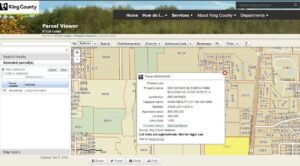 The corner building on the east side of 24th Ave is owned by a private developer.
The corner building on the east side of 24th Ave is owned by a private developer.
Here are the various taxes collected by King County, the top is the distribution, the bottom is the amount the taxpayer actually pays on that parcel.
West Side: Port of Seattle
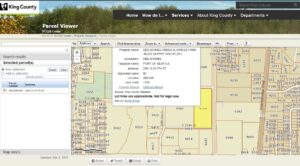 Now here is a similar piece of property, on the west side of 24th Ave. It is also leased to private tenants. But this property is owned by the Port of Seattle.
Now here is a similar piece of property, on the west side of 24th Ave. It is also leased to private tenants. But this property is owned by the Port of Seattle.
 Here are their property tax distribution and actual payments
Here are their property tax distribution and actual payments
And then there’s this…
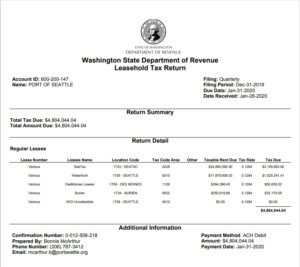 The Port of Seattle is not only the property owner, it is also the landlord, which means lots of ongoing, market rate lease revenue.
The Port of Seattle is not only the property owner, it is also the landlord, which means lots of ongoing, market rate lease revenue.
Every quarter, the Port of Seattle gets $395,000 in lease payments from its tenants at the Des Moines Creek Business Park. $1,580,000 every year.
Two Sides Of The Same Street
A comparison of tax and lease revenues from similar properties at the Des Moines Creek Business Park.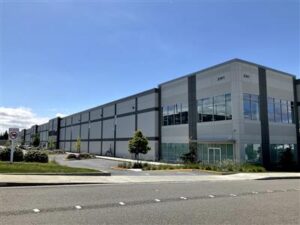 | 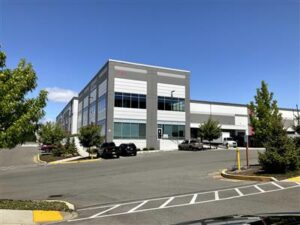 |
|
| Port of Seattle Property (west of 24th Ave.) | Private Owner (east of 24th Ave.) |
|
| Lot Size | 490,456 | 399,349 |
| Appraised Land Value | 0 | $56,260,000 |
| Property Tax | 0 | $707,650 |
And that’s just one tenth the developed square footage along that block within the City of Des Moines. If you sum all the lease payments the Port receives in that area and all the property taxes it saves, the Port of Seattle obtains more than $8.5 million in annual advantage over similar buildings on the other side of the street. This is land that your Federal tax dollars paid for, as part of the Sea-Tac Communities Plan.
The Greater Public Benefit argument
The policy argument has always been that the Port creates jobs and growth. The economic benefits it provides are so large–even for the residents under the flight path, these benefits more than compensate for the various negative impacts. Not quite.
One time money vs. Structural revenue
2This system creates very well-paid, but temporary construction jobs. It also creates a very healthy slug of one-time money for cities in the form of impact fees and permits.
But once the building is done, the jobs at the new buildings tend to be not so great. And these workers are people who do not live in the host city. However as landlord, the ongoing revenue stays with the Port of Seattle.
Property buyouts, either from the FAA or WSDOT, are particularly difficult for both cities and schools because every parcel of land the Port buys means less property taxes for the city and the school districts. Forever.
Previous efforts
In 1973 the FAA acknowledged the vicious cycle of conflict between airports and communities. Airport operators never bothered with communities before acting. They would make the cost/benefit analysis that it was better to act and wait for communities to sue. Worst case scenario? A suit might be successful and the airport would compensate an individual property owner. If not, the airport paid no cost.
What was supposed to happen
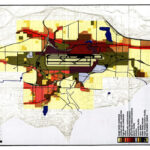 The Sea-Tac Communities Plan of 1976 was meant to break that cycle. The idea was to develop an equitable system whereby harms could be minimized and mitigation could be negotiated in advance. As operational revenue increased, communities would share in some form of ongoing and progressive compensation.
The Sea-Tac Communities Plan of 1976 was meant to break that cycle. The idea was to develop an equitable system whereby harms could be minimized and mitigation could be negotiated in advance. As operational revenue increased, communities would share in some form of ongoing and progressive compensation.
What did happen
But what happened instead? Local governments reverted to the economic benefits argument. Small grant programs were provided, funded with our own property taxes through the Port’s Property Tax Levy. But those grants are literally the Port redistributing our own taxes; and almost always for projects which ultimately will also benefit the Port.
Except for SeaTac
Ironically, through their Inter-Local Agreement with the Port, the City of SeaTac achieved what the entire area was meant to have–a system of ongoing, predictable, structural revenue to the entire region. And a major portion of that agreement is also funded by the property tax levy. Every King County property owner pays about $1 a year to compensate SeaTac for its airport impacts. Why other cities do not is a question worth asking.
Case study
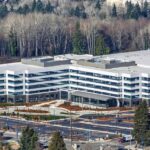
The Des Moines Creek Business Park above is instructive. It was too seductive to pass on for the City of Des Moines, which desperately needed the immediate, one-time revenue the project would provide. And having been completed, from the outside it appears to be a thriving development.
But the long term results are significant:
- The project cleared hundreds of trees, replacing dozens of acres with impermeable asphalt.
- The land generates no revenue for Highline schools.
- And the only revenue it generates for the City of Des Moines is a few thousand a year in Utility Taxes and Leasehold Excise Tax. Compare that with the hundreds of thousands in taxes paid by the commercial property owner just across the street.
- Almost none of the employees at any of these buildings live in Des Moines and almost none of these businesses generate knock on revenue for surrounding shops and restaurants.
- But the Port is able to lease those buildings at the same market rates as every other commercial developer.
However…
Governments like Des Moines can also lease property to private tenants–and still generate that same leasehold excise tax benefiting the entire region. If a city could develop such projects, they would not only generate structural revenue, but also far more tax revenue to benefit the entire region.
The project is literally “the rich governments get richer.” It not only damaged Des Moines and benefited the Port, it was nothing the City itself could not have done, given the proper ‘hand up’. If the Port had truly wanted to provide ‘economic development’ for Des Moines, it would have provided that ‘hand up’. But both the City and the Port instead chose a hand out.
Economic Vampires
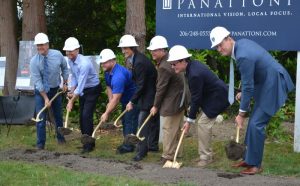
This is not always the case. In some instances, Port developments have been genuinely beneficial for partnering communities. But not always. At bottom, the Port’s real estate development meets their interests. It is up to each partner to properly assess the benefits on their side of the negotiation.
But it is simply a fact that Port projects have been irresistible to airport communities, which all too easily buy into an argument that is essentially trickle-down economics; that a project will somehow benefit the local economy to such an extent as to outweigh the loss of property tax revenue. As we’ve seen, that is not always true.
In fact, over time some projects have actually weakened municipalities like the City of Des Moines. We call it ‘municipal vampirism’ because the life blood of any city is property taxes. It is the key to maintaining local services and good public schools. On top of the noise and pollution, if that life blood is drained, few cities or school systems can hope to thrive.
The Port’s system of grant-based compensation system sucks out that essential energy in order to make itself stronger.
The most insidious part of this whole strategy is that the Port is able to tout all its great work for King County on all media outlets. And since few politicians have been able to resist the one-time money and “the golden shovel” photo-op; the Port, like The Count, has usually had no need to ‘hard sell’ or compel anyone to do anything.
Dracula is always invited in..
1Bram Stoker’s Dracula, chapter 18. Dracula’s powers are seductive, but ultimately, all his victims must ask to be taken.
2In fact, most cities recognize the moral hazard in this incentive structure and set aside one-time money for their own long-term capital projects. Otherwise, the urge to use one-time money to pay for salaries can have devastating consequences.
3To be fair, the Port has almost never gotten close to that maximum. The 2023 Budget, allocates $82MM. Keeping that number below 70% of the maximum in recent years has been touted as the Port showing sensitivity. They also are fond of pointing out what is, in their mind, the minor impact for each homeowner.
4Contrast this with cities which must go to voters for almost any tax increase. And even then, generally must ask for small, specific purpose taxes.
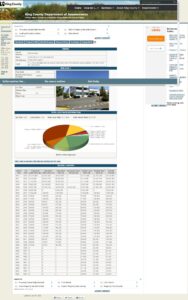
Just a suggestion – I sent the question about Eatonville so I am not near the area but …you lay out a compelling case that leads me to my suggestion – I was looking for a “What You Can Do” section. I assume I can’t write a King County elected official or anything (since I am not in KC) but if there is something – I’d love to know because the planes that leave SeaTac or any airport, continue the effect of pollution (noise and otherwise) over the entire flight. I was camping in Idaho a few years ago and we were hundreds of miles from any major airport but I remember talking to my husband about the hearing a few planes go over – they were high but when you take away the other noise pollution (highways, barking dogs, loud music, factories, etc,) suddenly you can hear everything else – which at that time, included planes at 30K feet over the middle of Idaho. So, if there is something people can do – even those who live under the ‘cruising’ flight path – my suggestion is to make a section so people everywhere can do something, if there is anything. Many times people feel helpless – big government and little people so people, like me, assume there is no choice but to accept it. Just my thoughts, in case it helps.
A general comment for future readers to consider – the area of the nation that has no major airport such as MT still has incredible tourism. Plus, in my experience when I am on a plane – it seems like the majority of passengers fly for work (and I am guilty of flying for work unnecessarily – but will reconsider in the future). Plus, I’d ask if the tourism dollars are worth it the cost…long lines, traffic, environmental, noise, etc, etc, The costs are higher than we often realize. Just a thought to consider.